Bold & Easy colouring has taken off lately, and along with them – alcohol markers. Thick outlines, flat colours, and cute/cuddly scenes make it fun and relaxing to colour without overthinking it. And alcohol markers are great at filling big shapes with solid colours and no streaks, even on cheap paper.
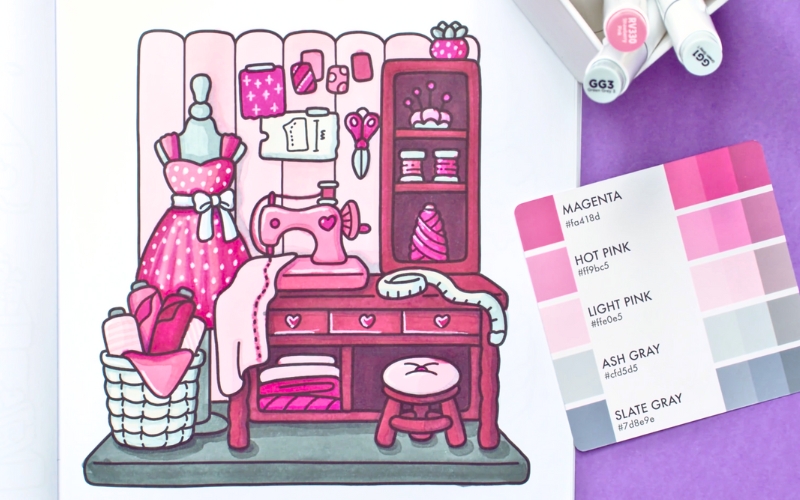
In fact, Ohuhu alcohol markers (one of the most popular brands seen in the bold & easy trend on TikTok) have been out of stock over and over again with the huge increase of people choosing to jump into adult colouring.
And alcohol markers feel like a huge step up from water-based markers for colouring like this. But they also have extra “superpowers” in their ability to blend colours together smoothly for when you want to take your art a step further again.
Blending is a technique that softens those edges and fades one colour into the next. It’s the difference between a stylised cartoon and a realistically shaded portrait or landscape, where the colours fade gently and the lighting feels natural.

Maybe you’re adding shadows to a face, creating smooth gradients in a background, or building depth in a character’s clothing. That’s where markers that are good at blending really come in handy.
Blending isn’t a must-have for every style, and it’s perfectly fine to stick with those bold, confident blocks of colour. It’s a fun, satisfying way to colour, and a creative choice that suits a wide range of styles, preferences, and moods.
But blending is one of those things that some of the higher quality (and often, more expensive) alcohol markers can do significantly better than their cheaper alternatives.
So I set out with the goal to test them all – to find out which markers are best at a range of different tests – and specifically, at easy blending.
I tested both alcohol and water-based markers on the paper that works best for each to give them the best chance to showcase their blending abilities.
You can see all my other tests here, or keep reading for the results of my marker blending test!
(Still learning the differences between alcohol and water-based markers? I’ve broken it all down in my Beginner’s Guide to Markers.)
Please note: This post contains affiliate links. If you click on them, I may earn a small commission (at no extra cost to you). Some of these markers were provided to me by brands, while others I purchased myself. You’ll find a full list of the markers I was gifted at the bottom of the article. None of the brands featured here have any involvement in this review, and all opinions are my own.
What Makes a Marker Great For Blending?
Great blending often comes down to a few key features. These are the qualities that make it easier to build smooth transitions, soft edges, and streak-free layers:
- A brush tip – Brush tips give you better control over layering and make it easier to blend colours smoothly. The flexible tip helps soften edges and transition between colours without harsh edges. It’s incredibly difficult to blend alcohol markers well with any other tip.

- The right moisture – Markers that are too dry won’t blend easily. Too wet, and they can oversaturate your paper. The best blending markers sit somewhere in the middle, moist enough to keep the ink moving, but not so wet that the paper starts to break down. (The correct amount of moisture varies between alcohol and water-based markers)
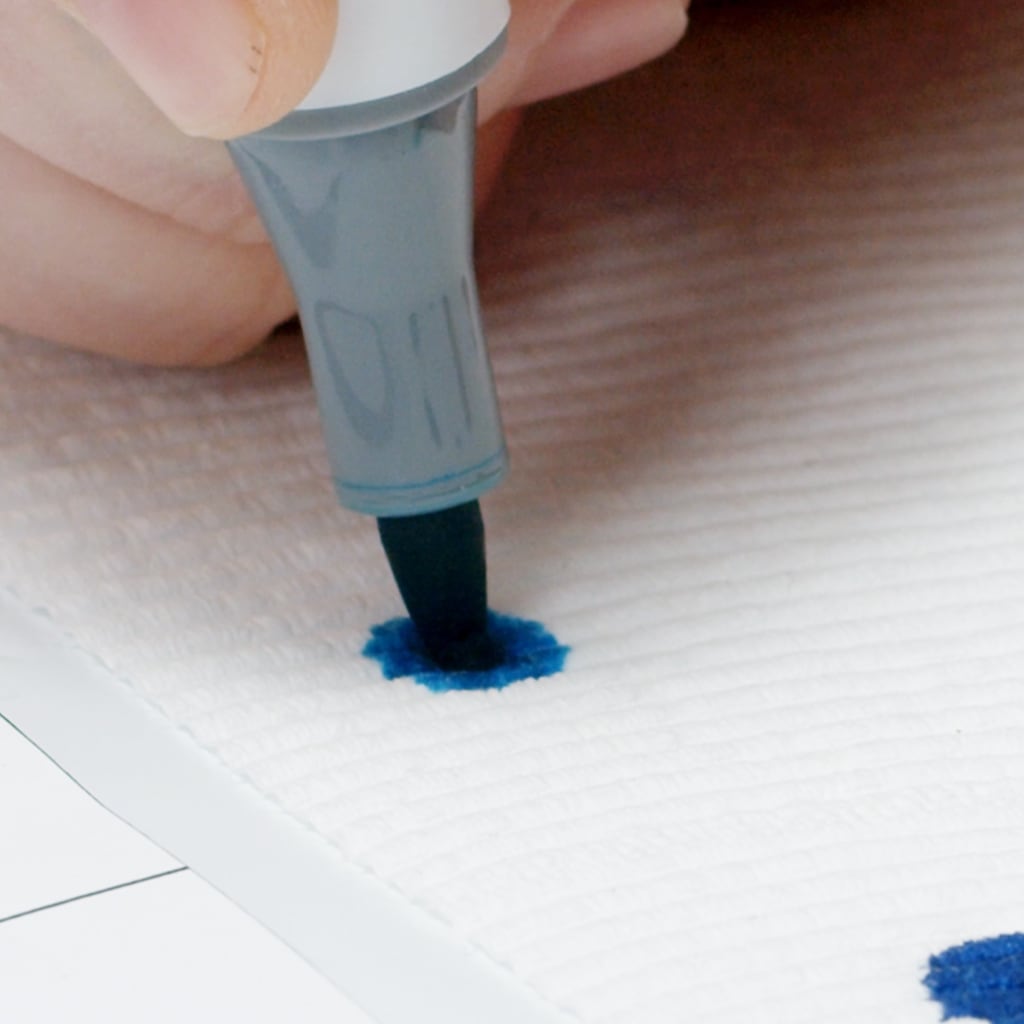
- Good colour range – Blending works best when you have gradual colour steps to work with. For example, blending yellow to orange will always be easier than blending yellow to purple. Having more gradual steps between colours helps make blending feel easier and more natural. If the range is too limited, it can be harder to create smooth transitions or build depth with layering.

- The right paper – Blending depends just as much on your paper as your markers, with alcohol markers performing best on smooth cardstock that delays drying, and water-based markers needing absorbent paper, like watercolour or mixed media paper, to avoid buckling and pilling.

And it’s worth saying again. Not every marker needs to blend like a dream. If you prefer bold colours and cell-shading, that’s a completely valid style, and one that looks fantastic in its own right. But if you’re looking to shade, layer, or build depth and dimension, then blending becomes a much bigger part of the process. And that’s where the right markers (and the right paper!) can really shine.
Now that we’ve covered what makes a marker great for blending, let me show you how I tested them to find out which ones performed best.
How I Tested These Markers
This post is part of my massive Ultimate Marker Comparison, where I tested over 2,800+ markers from 90+ brands. The whole journey is also documented in my two-part YouTube series – ‘Everything You Know About Markers is WRONG‘ and ‘The BIGGEST Marker Test on YouTube‘. I reviewed everything from blending and layering to streakiness and bleed-through. I even compared the marker smells!
Blending performance was a key part of the review, because it’s one of the most useful techniques for artists who want to add depth and make more realistic art.
I used this worksheet to test the blending and other features of each brand of alcohol and water-based marker:

Using this sheet, I tested each brand of markers on these criteria:
- A single colour fill to check for streaking and smoothness
- Blending between similar colours to see how easily the marker can create soft gradients
- Blending between opposite colours to see how smoothly a marker can bridge two highly-contrasted colours.
- Blending to colourless, to see how well the ink lightens gradually as it tapers off on the page
These were the key features considered for the blending ranking, along with the feel of the marker and effort involved in creating these results. The alcohol markers were all tested on marker blending card, and the water-based markers on a bristol vellum.
The Results
Here’s a scan of each marker’s blend, along with a score allocated for “ability to blend well”
The scores range 1 (worst) to 5 (best) based on how smooth the transitions were, how well the colours layered, and how easy it was to control the blend.
Alcohol Markers
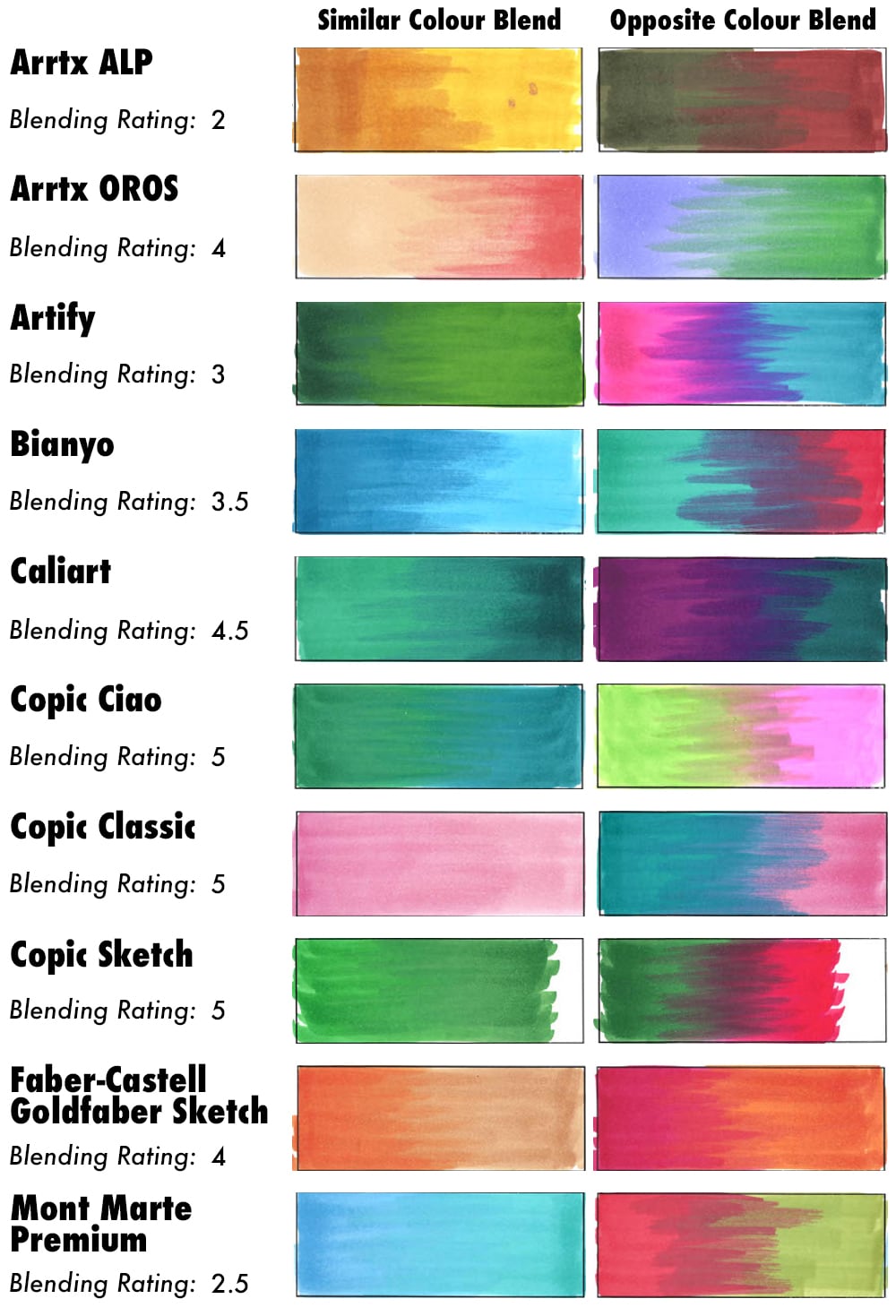

Water-Based
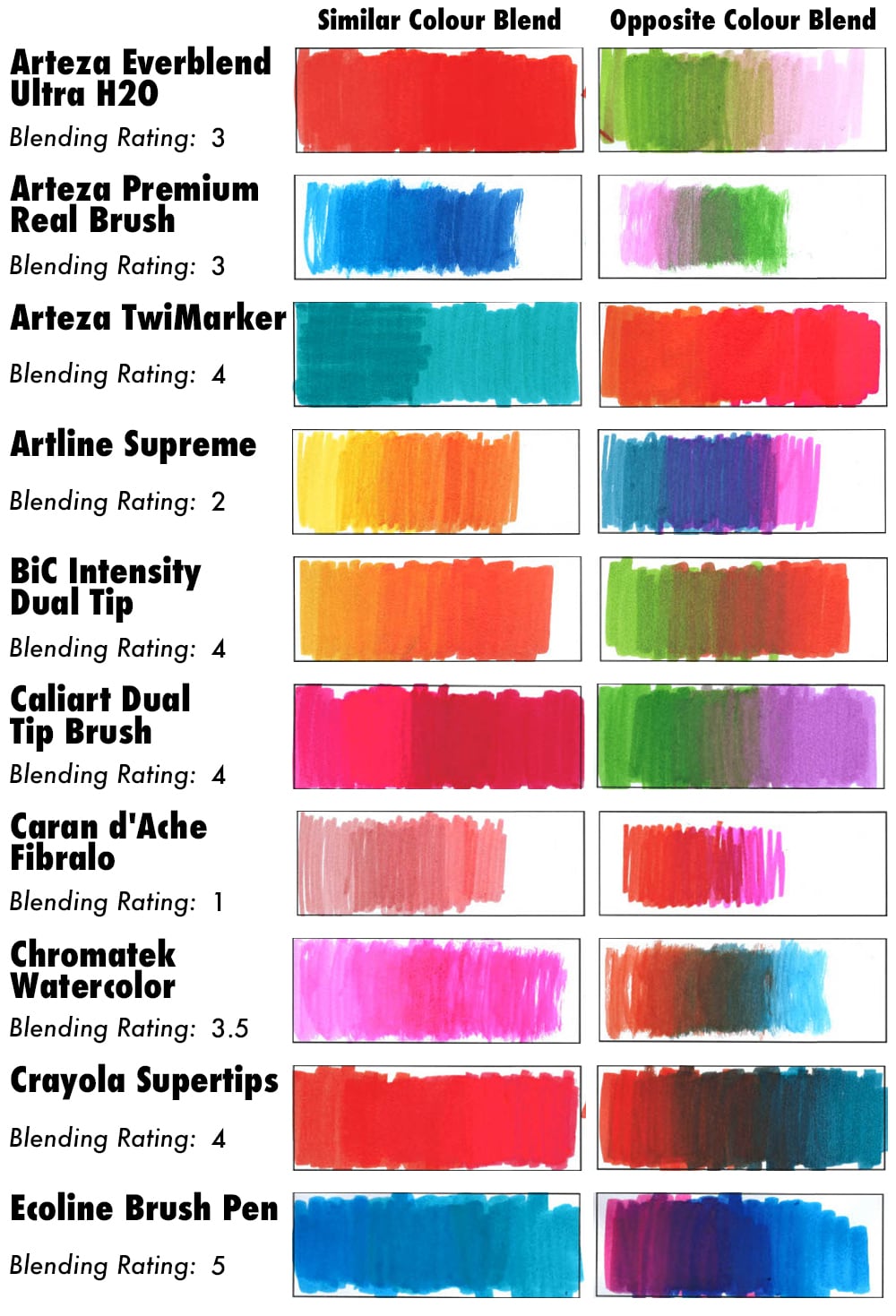



Miscellaneous Inks (Permanent markers/India ink/Mixed ink)

The best blending markers aren’t always the best overall. If you want to explore how different brands performed across other features like streaking, layering, and bleed-through, make sure to check out my full Ultimate Marker Comparison.
Which Markers Blend the Best?
Here are some of my key insights and favourite markers (specifically for blending) from everything that was tested, in both the alcohol marker and water-based marker categories.
Best Alcohol Markers For Blending
These alcohol markers were the top performers in my blending tests, scoring a either a 4.5 or 5:
From all the markers I tested, these were the easiest to blend and produced the smoothest transitions between colours. Their ink moved cleanly, the gradients looked soft and natural, and they responded well to layering without streaking or drying out too quickly.
Best Water-Based Markers For Blending
These water-based markers were the top performers in my blending tests, with each one scoring a perfect 5 out of 5. They were the easiest to blend both with and without water.
These markers performed best on watercolour or mixed media paper, where the surface can handle more moisture without buckling.
Note: Some markers from my overall testing were excluded from this blending test if they didn’t include a brush tip or weren’t designed for blending (i.e. fineliners).
Remember, blending takes practice. Even the best markers won’t blend smoothly without the right technique and paper. But the right tools do make a big difference. Take your time, and have fun with it!
Happy blending!
Here are some other articles you may enjoy:

Ultimate Marker Comparison
I Tested Every Marker I Could Find … and the Results Are IN!
I tested a whopping 2,872 markers from 90+ brands against 15 different criteria, from blending and layering abilities to streakiness and even smell.
A Beginner’s Guide to Markers: Alcohol and Water-Based
Find out all the differences between Alcohol and Water-based markers in this beginner’s guide to markers.
I spent weeks learning how to use markers, both alcohol and water-based so I can provide you with the best techniques on how to use them.
Beginner’s Guide to Bold & Easy Colouring Books (and where to get free colouring pages!)
We started this blog by talking about the Bold & Easy colouring trend. Those big shapes, thick outlines, and confident colour blocks that make colouring feel fun and approachable.
If that sounds like your style, I’ve put together a full blog that dives deeper into the trend, with tips, ideas, and a bunch of free pages you can try.
PLEASE NOTE: This post contains affiliate links, which means I may earn a small commission if you make a purchase at no extra cost to you. I purchased most of the supplies used in this review, but some items were given to me for previous videos by the brands. These include: Arrtx, Etchr, Karin, Ohuhu, OLO, Sharpie, Spectrum Noir, Staedtler, Talens, and Winsor & Newton.


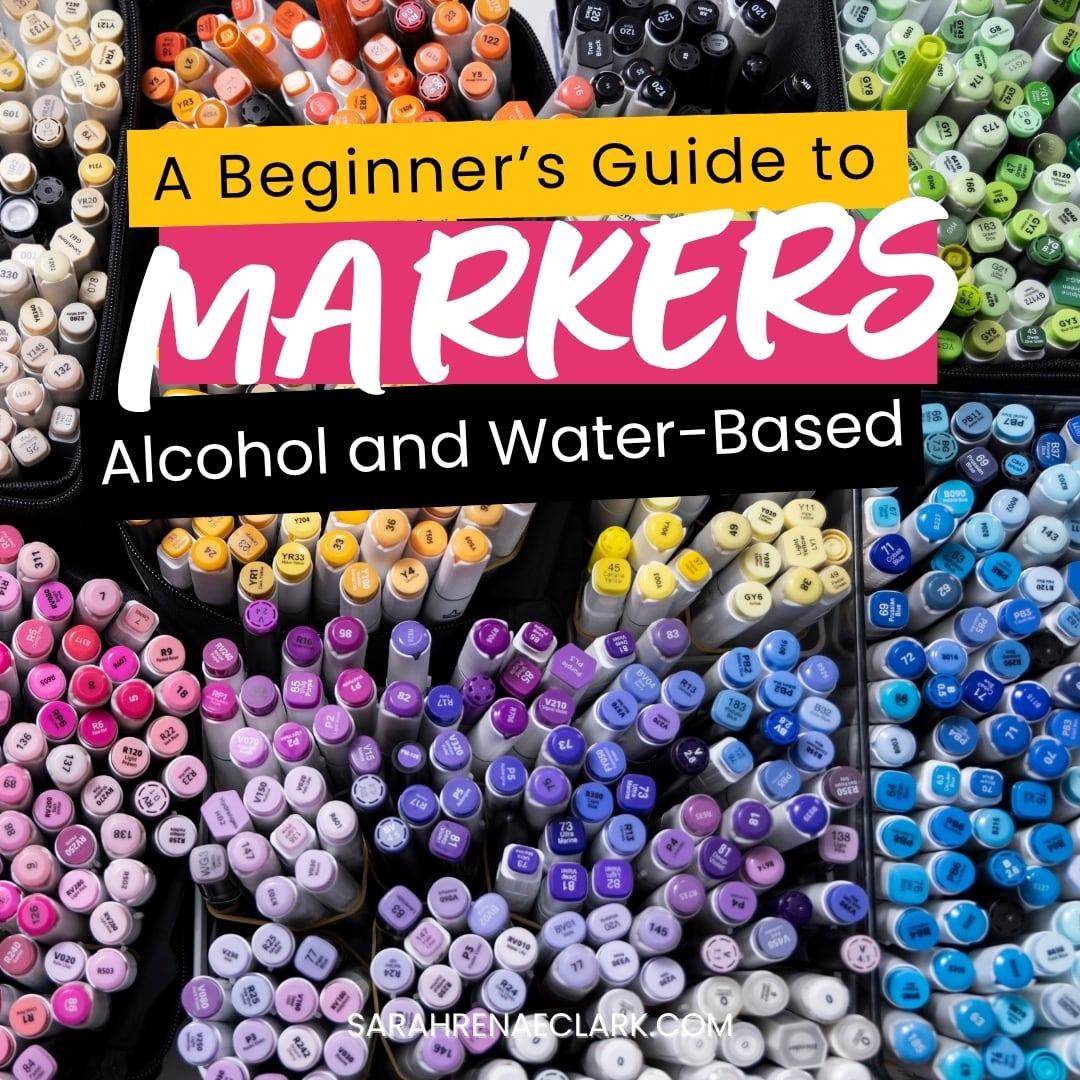























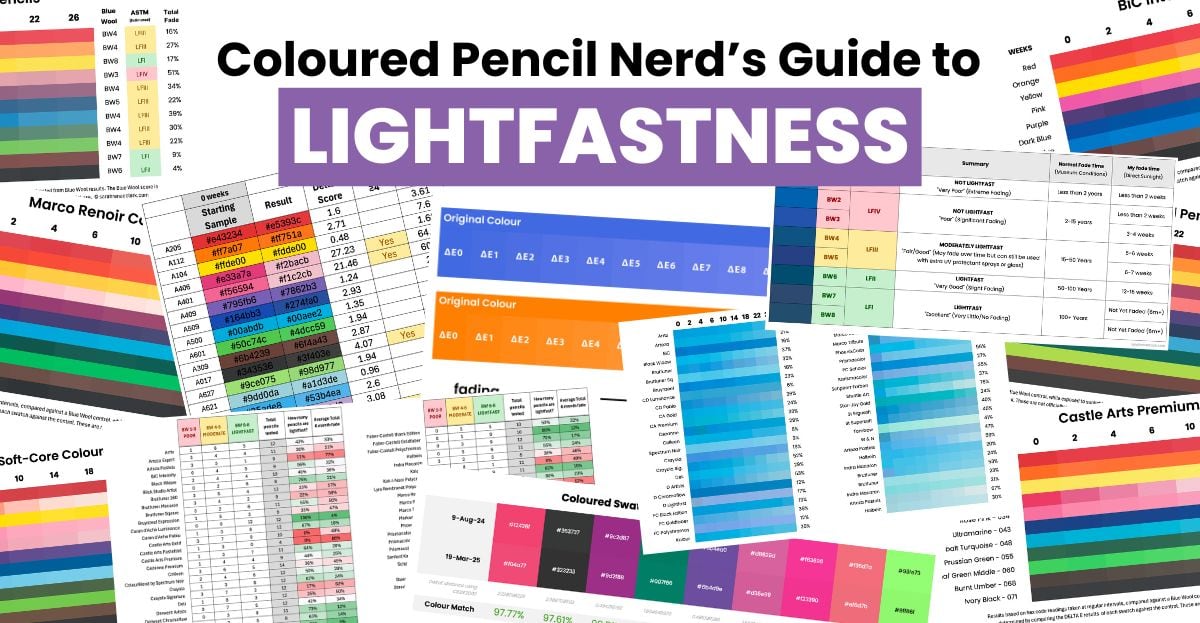

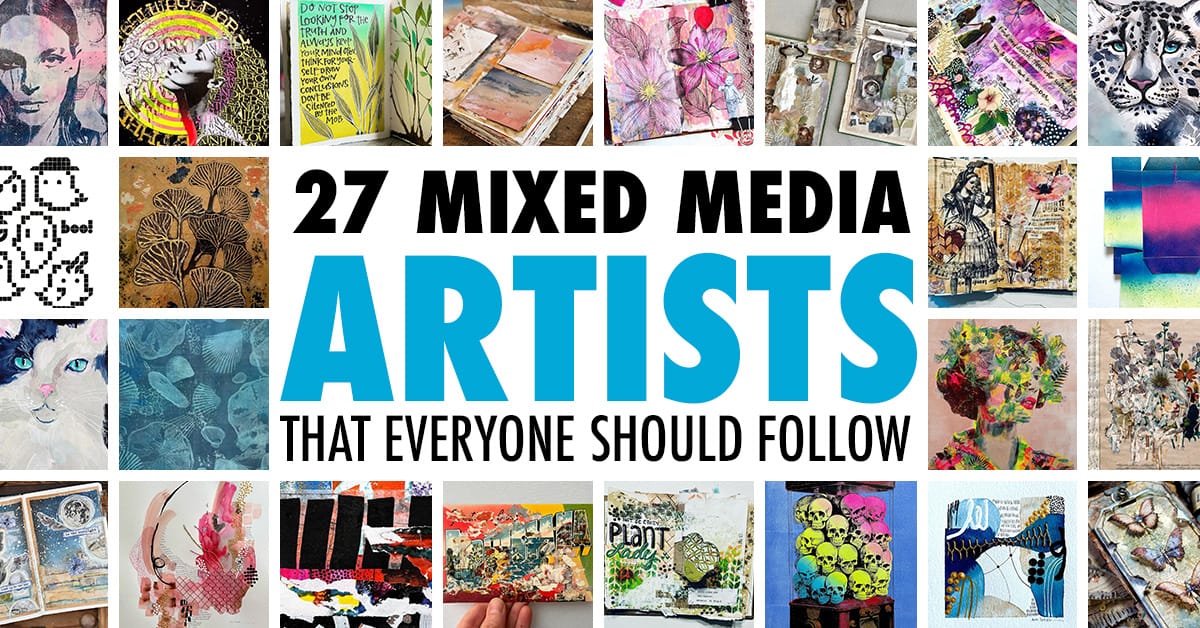


Looks like lots of fun.